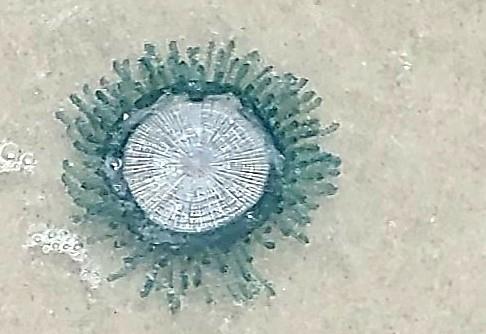Look Out for Blue Buttons!

Have you spotted these little wonders washing up on the shore?
In June, media around South Texas started reporting sightings of these curious little creatures washing up on the shores of Port A and Texas Coast. Commonly known as Blue Buttons, they look like a strange type of jelly fish, but they're actually related to the Portuguese Man o' War.
Not jellies!
The scientific name for these fascinating sea creatures is Porpita porpita, and they are hydroids, or members of the Class Hydrozoa, according to ThoughtCo.com. These floaters drift along Gulf waters on a central disc surrounded by colonies of polyps that line up and look like blue, turquoise or yellow tentacles.
Can they sting?
Yes, they can sting like jelly fish, inflicting minor irritation, so as you marvel at them on the shore, take care.
Where do they live?
Blue Buttons also live in warm, coastal waters near Europe, the U.S. South, and New Zealand and in the Mediterranean Sea. But it's fun to point them out to kids or spy one yourself when walking on the beach at Cinnamon Shore.
Circle of life
These creatures, with a mouth underneath their disc-like bodies, eat plankton and tiny organisms, while sea slugs and violate sea snails consume these delicate beauties. It's all part of the food chain and the circle of life in the sea!
Sources: Kennedy, Jennifer. "Learn About the Blue Button Jelly." ThoughtCo, Feb. 11, 2020, thoughtco.com/blue-button-jelly-porpita-porpita-2291819.
Published on Monday, June 15, 2020